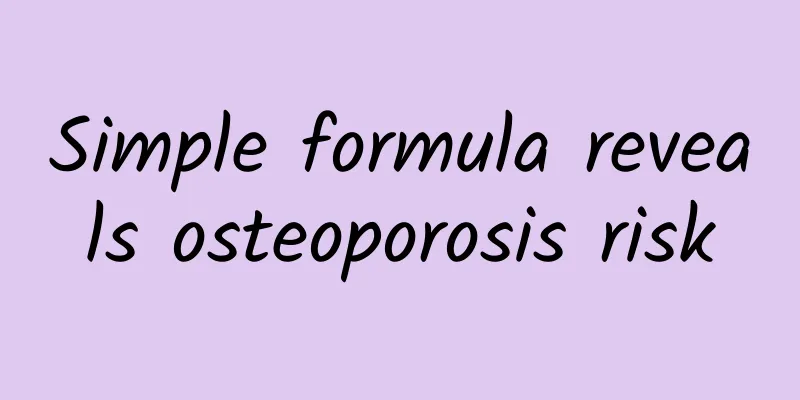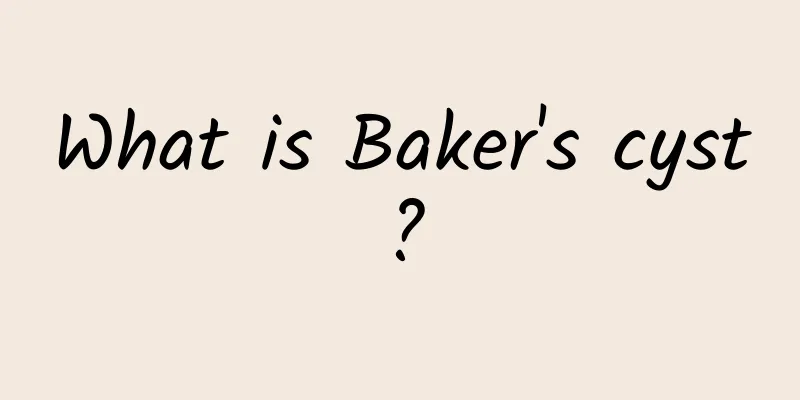Simple formula reveals osteoporosis risk

|
This is the 3837th article of Da Yi Xiao Hu 【Behind the unexpected fracture】 I just lifted my grandson and broke my wrist; After a bout of coughing, the thoracic vertebra was fractured; The bus jolted and I fractured my lumbar vertebrae; I accidentally slipped when I got up at night and fractured my femoral head... In the eyes of young people, the causes of fractures in middle-aged and elderly people are almost "unbelievable". Behind these "unbelievable" reasons, they all point to a common health risk - osteoporosis. "People all over the world have suffered from osteoporosis for a long time." In many popular science articles, osteoporosis is often called the "silent killer" or "quiet killer", especially for middle-aged and elderly women. Its occurrence is gradual/slow, but the consequences are serious/irreversible. For example, vertebral fractures cause changes in the chest structure and abdominal compression, which seriously affects cardiopulmonary function; femoral head fractures cause the elderly to be bedridden for a long time, which in turn brings systemic infections and multiple complications. Femoral head fractures (hip fractures) are also the most serious osteoporotic fractures. Statistics show that by 2035, there will be about 4.83 million cases of major osteoporotic fractures (wrist/cone/hip fractures) in my country, and this number may reach 5.99 million by 2050, with medical expenses estimated to be as high as 163 billion yuan. For most women, the risk of osteoporotic fractures in their lifetime is higher than the combined risk of breast cancer/endometrial cancer and ovarian cancer. [Simple formula to find osteoporosis risk] In fact, because osteoporosis often occurs "silently", it is of great significance to discover your own osteoporosis risk as early as possible. Today, I recommend a simple and widely recognized self-screening tool for osteoporosis in Asians, referred to as the OSTA Index (Osteoporosis Self-assessment Tool for Asians), which represents the risk level of osteoporosis. The specific algorithm is as follows: OSTA index = (weight (unit: kg) - age (unit: years)) × 0.2 OSTA index>-1, low risk; -1≥OSTA index≥-4, medium risk; OSTA index ≤ -4, high risk. If your calculated result is medium-to-high risk, you need to go to the hospital for professional diagnosis as soon as possible. If confirmed, in addition to actively supplementing calcium and active vitamin D, you should also start using drugs to improve bone density as soon as possible, such as bisphosphonates and monoclonal antibodies. 【Three key tips to prevent osteoporosis】 1. Start early if possible For women, bone density reaches its peak between the ages of 25 and 35. You can supplement calcium and vitamin D appropriately at this stage to lay a good foundation for bone health. After the age of 35, when bone loss begins, the better the bone foundation, the more bone mass will be retained, and the occurrence and progression of osteoporosis will be relatively slow. 2. Resistance training The purpose of proper resistance training for middle-aged and elderly people is to increase muscle strength. Because bones and muscles support each other, without the protection of muscle strength, the bone and joint system will become unstable, making it easier for the elderly to fall, causing the already loose bones to fracture more easily. In fact, it is found in outpatient clinics that middle-aged and elderly people with osteoporosis are often accompanied by sarcopenia, and resistance exercise is the first choice for increasing muscle strength. For middle-aged and elderly people, we recommend static squats and elastic band training. These exercises do not require too much space and can be completed at home. (Static squat) (Elastic band exercise) Of course, we also remind middle-aged and elderly people that for their safety, it is best to have support around them or have family members accompany them when doing these resistance exercises. 3. Avoid excessive weight loss The idea that "it's worth a fortune to be thin in old age" is unscientific. Because too low a body weight is a very important risk factor for osteoporosis and brittle fractures. The elderly should be "fatter". But "fatter" here does not mean simply having more fat, but being "sturdier", that is, having more muscle. This also requires the middle-aged and elderly to consume more high-quality protein in their daily diet, such as dairy products/fish and shrimp/soy products, etc., to facilitate the synthesis and repair of muscles by the human body. Prevention and treatment of osteoporosis is a long-term and systematic project, which requires good compliance of the middle-aged and elderly. Especially for postmenopausal women, it is strongly recommended to have a bone density test (dual-energy X-ray absorptiometry) once a year. Family doctors remind you: the bones that support your body also support your career and family happiness. I hope you pay more attention to bone health. Author: Xinjing Town Community Health Service Center, Changning District, Shanghai Zhou XiangjunDeputy Chief Physician |
<<: What to do if you are constipated? These 5 foods will help you get rid of constipation!
>>: Common misunderstandings about oral anti-insomnia drugs
Recommend
What are the symptoms of uterine fibroids? These eight are the most common!
Uterine fibroids can cause great harm to women. T...
How to remove the inner membrane?
Women have regular menstruation every month. The ...
Knowledge about febrile seizures in children
How much do you know about febrile seizures in ch...
Should I implant first or cool down first?
In fact, women's body temperature changes dur...
What is the reason for the skin peeling on the pregnant woman's belly?
In clinical practice, many pregnant women experie...
Why is rock sugar orange so sweet? Where is the best place to produce rock sugar orange?
Rock Sugar Orange is very popular in the market f...
Is it normal to urinate frequently during early pregnancy?
When a woman gets pregnant after marriage, she wi...
Causes of meconium-stained amniotic fluid
If there is fecal contamination in the amniotic f...
What causes vaginal inflammation?
Vaginitis can be roughly divided into six types: ...
After a woman gets married, this "hole" will often get sick
The chance of married women suffering from cervic...
What does it mean when a pregnant woman dreams of miscarriage and bleeding?
Pregnant women should pay attention to their phys...
What's going on if there is a little blood in the leucorrhea?
Normal leucorrhea is milky white or colorless and...
Does anterior uterus pregnancy show pregnancy
Anterior uterus is a relatively common body posit...
What are the causes of vaginal pain?
Every woman wants her vagina to be healthy, which...
Stomach pain, menstruation just won't come
Many women feel that abdominal pain during menstr...









